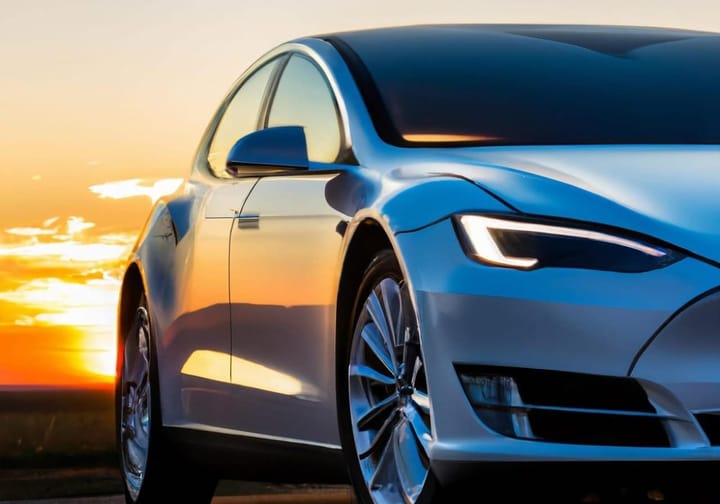FAA Reinstates Flights, Avenger Demo, and China Rocket Launch

TL;DR
- U.S. FAA lifts 10% flight reduction at 40 airports after controller staffing stabilizes
- MQ‑20 Avenger successfully flies autonomous crew‑uncrewed mission under F‑22 command, tests collaborative combat aircraft framework
- MD‑11 and related models placed into emergency AD following UPS crash, requiring engine‑pylon inspections worldwide
- China's Dragon 2C launches, signifying rapid expansion of reusable launch vehicle fleet
- Virgin Atlantic secures $745 M loan, plans 787 and A330neo upgrades and Starlink integration by 2027
FAA Reverses 10 % Flight‑Reduction Order as Controller Triggers Plummet
The Data Behind the Cut
- Peak reduction: ~2,900 flights (≈6 % of scheduled departures) on 9 Nov.
- Average post‑cut impact: 150–300 flights per day (≈0.3–0.5 %).
- Cancellation rate fell from >6 % to <1 % by 16 Nov.
- Staffing‑trigger count: 81 on 8 Nov, declining to 6 (Sat), 8 (Sun) and 1 (Mon) by 15 Nov.
- 40 airports affected, including ATL, ORD, LAX, JFK, DFW, SFO, OAK and SJC.
Trigger‑Driven Policy in Action
- The FAA’s emergency order linked flight cuts directly to real‑time “staffing‑trigger” metrics.
- As triggers dropped, the mandated reduction was scaled back from an initial 4 % target to 3 % before being lifted.
- This graduated approach preserved network capacity while maintaining safety margins.
- Once triggers fell to single‑digit levels, the order was rescinded on 17 Nov, allowing airlines to resume normal schedules at 06:00 EST.
Geographic Uniformity and Operational Response
- All 40 airports experienced similar reduction curves, indicating a centralized policy rather than airport‑specific constraints.
- Southwest, United and other carriers confirmed full schedule re‑activation on Monday morning.
- Residual delays were modest (145–90 delays at SFO, OAK, SJC during the reduction period) and are expected to clear within one to two weeks.
What Lies Ahead – Emerging Trends
- Staffing Stabilization: With trigger counts at ≤1, controller staffing is expected to remain stable barring another payroll disruption.
- Delay Recovery: On‑time performance should improve to ≈91 % as the backlog dissipates.
- Policy Sensitivity: The FAA retains the trigger‑monitoring framework; a surge above 20 triggers could prompt short‑duration cuts (<5 %).
- Labor Negotiations: Ongoing payroll negotiations for controllers remain a critical factor; any lapse could re‑expose the system to capacity curtailments.
USAF’s Autonomous Wingman Gains Flight: A Strategic Shift
Demonstrated Capability
- F‑22 pilot issued high‑level commands via cockpit tablet; MQ‑20 executed target acquisition, sensor sweep, and weapons release autonomously.
- Two L3Harris SDRs (BANSHEE Advanced Tactical Datalinks & Pantera ILRs) linked through Lockheed Martin’s Open Mission Systems (OMS) provided a secure, vendor‑agnostic data link.
Open‑Architecture Communications
- SDR‑OMS integration establishes a repeatable baseline for crew‑uncrewed teams (CCT) across platforms such as MQ‑19, MQ‑21, and future sixth‑generation aircraft.
- Non‑proprietary interface reduces integration risk, simplifies lifecycle upgrades, and supports joint‑service adoption.
Endurance and Payload Flexibility
- Engine thrust > 5,000 lb per engine; cruise speed ≈ 400 kt; service ceiling > 50,000 ft.
- Extended‑range endurance ≈ 200 h, enabling persistent presence without frequent basing.
- Payload capacity 3,000 lb internal + wing stations; internal bay accommodates up to 3,500 lb of munitions or large‑format sensors.
- S‑shaped exhaust reduces infrared signature, aligning with fifth‑generation stealth envelopes.
Implications for Force Structure
- Scalable payloads allow rapid role change (strike, ISR, electronic warfare) within a single sortie, increasing sortie versatility.
- High endurance supports “loyal wingman” concepts, extending the operational reach of manned fighters.
- F‑22 demonstration highlights crew workload limits; the forthcoming F‑23, with larger avionics bays and higher‑throughput processors, is projected to manage 4‑6 autonomous assets simultaneously.
- Comparison with MQ‑9 Reaper shows a shift from ground‑based control to onboard autonomy, reducing latency and expanding tactical envelope.
Future Outlook (2026‑2030)
- Production decision for MQ‑19 (later redesignated MQ‑20) expected by FY 2027; fielding projected for 2028.
- Dedicated CCT squadrons likely to be established by 2028, integrating autonomous wingmen into air‑tasking orders.
- Joint‑service adoption anticipated; Navy and Marine Corps may apply the SDR‑OMS model to carrier‑based loyal wingman concepts.
- Doctrine revisions within Air Combat Command will codify new TTPs for crew‑uncrewed missions and formalize pilot‑vehicle interface training.
China’s Reusable Launch Vehicle Surge: The Chang Zheng 2C in November 2025
Launch Cadence in Two Hours
- 03:52 UT Nov 16 – Chang Zheng 2C /YZ‑1A – Site 401 (SLS‑2), Jiuquan – multiple LEO satellites – hypergolic N₂O₄/UDMH – first flight of the configuration, 19‑min window closure risk.
- 04:00 UT Nov 16 – Chang Zheng 2C /YZ‑1S – Jiuquan Satellite Launch Center – Sun‑synchronous payloads – same propellant – launch window opened with 19 min remaining.
- 05:18 PST Nov 16 – Chang Zheng 2C /YZ‑1R – JSC pad (unspecified) – 28 mini‑Starlink‑type satellites – hypergolic – scheduled nominal ascent.
Reusability Signals
- First‑stage recovery not confirmed, but hypergolic cycle enables thrust‑restart for propulsive landing concepts under test.
- Parallel launches from Site 401 and the primary JSC pad demonstrate dual‑pad capability, a prerequisite for sub‑48‑hour turnarounds.
- Flight‑rate approaching SpaceX’s weekly throughput (three 2C missions within two hours).
Head‑to‑Head with Falcon 9
- Launches per week – 2C: 3; Falcon 9: 5 (four Starlink, one Transporter‑15).
- Reuse count – 2C boosters: 0 (first flights); Falcon 9: ≥31 flights on a single booster.
- Propellant – 2C: N₂O₄/UDMH (hypergolic, storable); Falcon 9: RP‑1/LOX.
- Typical payload – 2C: 5‑6 t to LEO; Falcon 9: ≈22 t to LEO.
Emerging Operational Trends
- Compressed launch windows indicate confidence in rapid pre‑flight processing and trajectory deconfliction.
- Hypergolic propulsion chosen for storability and engine restart, supporting future propulsive recovery.
- Dual‑pad utilization reduces scheduling bottlenecks, enabling a projected 8‑12 launches per month by mid‑2026.
- Payload mix includes domestic LEO constellations and Sun‑synchronous satellites, aligning with China’s space‑services roadmap.
2026‑27 Forecast
- Assuming continued manufacturing throughput, 2C fleet could sustain 8‑12 monthly sorties, driven by <48 h turnaround.
- Static‑fire tests suggest a minimum 20 % first‑stage recovery rate by early 2027, limited by hypergolic handling constraints.
- Introduction of a 2C‑B variant for high‑frequency rideshare missions may double reusable flight‑hour capacity by year‑end 2027.
- Payload capability of ~5 t per reusable launch positions China to capture 10‑15 % of the global LEO rideshare market.



Comments ()